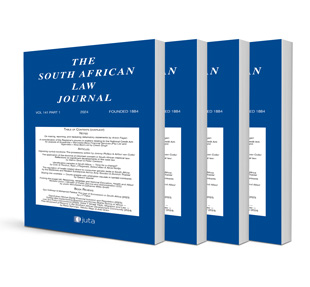
Redressing Spatial Apartheid: The Law of Nuisance and the Transformative Role of Social Utility and the Right to the City
Authors Thomas Coggin
ISSN: 1996-2177
Affiliations: Lecturer, School of Law, University of the Witwatersrand
Source: South African Law Journal, Volume 133 Issue 2, 2016, p. 434 – 451
Abstract
Social utility is an often underused concept in the law of nuisance, and yet is one that is able to infuse the law of nuisance with a dose of spatial equality. The right to the city is an idea that has at its core the need for meaningful access to the city. All citizens therefore are able to share in the fullness of what the city offers; to inhabit the city and share in its spaces and spoils; to be present in and experience the city; and to imagine the city, its form, meaning and operation through the practices of daily life. Increasingly, however, cities are being constructed along a neo-liberal paradigm, which prioritises private property over the public, denying and excluding many on the basis of their (lack of) wealth. The law of nuisance provides for remedies which aim principally to protect the use and enjoyment of private property vis-\xc3\xa0-vis other property owners. Traditionally, then, it has been interpreted within a predominantly propertied narrative, which has the effect of not only enforcing and perpetuating a propertied marginalisation of people in the city, but also has limited a normative understanding of the city and its socio-spatial dynamics to specifically the relationship between private property owners. This article seeks, first, to understand how the law of nuisance can be understood and developed within the context of social utility and the right to the city. Secondly, it looks at three cases that demonstrate the need to incorporate an understanding of social utility and the right to the city. I conclude that this is a necessary development of the law of nuisance because of the way it can redress the negative ramifications of spatial apartheid.